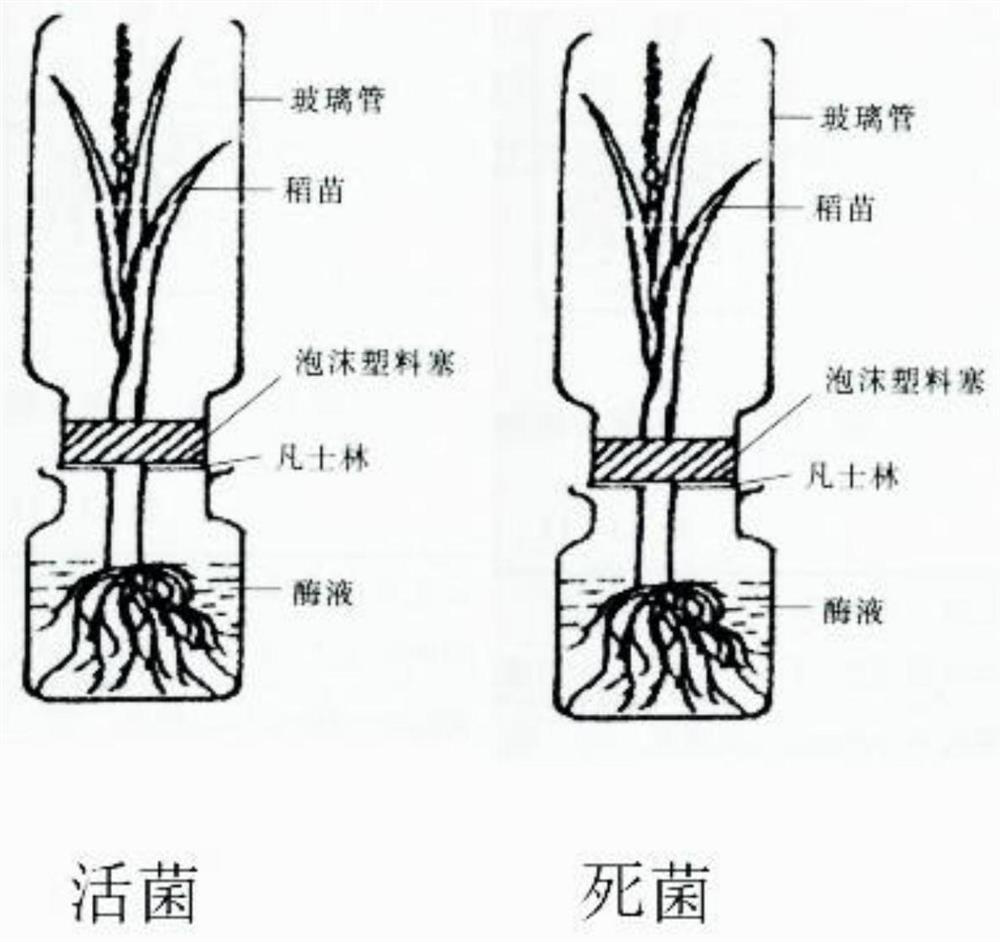Method for verifying endophytic symbiotic bacteria
A technology of symbiotic bacteria and strains, applied in the field of plant pathology
- Summary
- Abstract
- Description
- Claims
- Application Information
AI Technical Summary
Problems solved by technology
Method used
Image
Examples
Embodiment 1
[0047] Examples of validation of the Endosymbiotic Bacillus strain M-33:
[0048] The M-33 strain in Bacillus was calibrated with radioactive cobalt 60, and at the same time, it was bred into a strain resistant to streptomycin and rifampicin;
[0049] The marked M-33 strain is inoculated on the roots of the cultivated rice seedlings, and placed in a verified endophytic symbiosis device, which is strictly sealed. It is impossible for the M-33 strain to colonize, reproduce, and transfer on the surface of rice seedlings. The M-33 strain can only be colonized, propagated, and transferred in rice. Within 10 days, in the rice seedling cell tissue, the tested strain M-33 can exist from the top leaves of rice seedlings, proving that the endophytic symbiotic strain M-33 is indeed present in the rice cell tissue, proving that the M-33 strain It is indeed colonization, propagation and transfer in rice seedlings. Completely autonomous transfer of the rhizome to the top stem and leaf;
...
Embodiment 2
[0052] Validation of endosymbiotic Bacillus M-33 against cotton wilt:
[0053] The M-33 strain of endosymbiotic Bacillus with radioactive double resistance is used to control cotton wilt.
[0054] When the radiation double antibacterial strain M-33 is used for cotton seed dressing, the cotton seed dressing is inoculated, and the control effect on cotton wilt can reach 55%-65%.
[0055] 1. Vaccination:
[0056] When cotton is inoculated, cotton seeds are dressed with radioactive double antibacterial strain M-33.
[0057] The tested M-33 strain colonized, multiplied and transferred in the rhizome.
[0058] Fusarium wilt is delayed for 10-15 days in the initial stage of rhizome infestation; the incidence index of vitamin bundles in rhizomes is reduced by 50%-55%.
[0059] 2. Bolling period:
[0060] Fusarium wilt in cotton, when cotton buds bloom, the fusarium wilt has expanded from the rhizome to the petiole of the boll.
[0061] At this time, inoculate (spray, dip) the petio...
PUM
 Login to View More
Login to View More Abstract
Description
Claims
Application Information
 Login to View More
Login to View More - R&D
- Intellectual Property
- Life Sciences
- Materials
- Tech Scout
- Unparalleled Data Quality
- Higher Quality Content
- 60% Fewer Hallucinations
Browse by: Latest US Patents, China's latest patents, Technical Efficacy Thesaurus, Application Domain, Technology Topic, Popular Technical Reports.
© 2025 PatSnap. All rights reserved.Legal|Privacy policy|Modern Slavery Act Transparency Statement|Sitemap|About US| Contact US: help@patsnap.com

